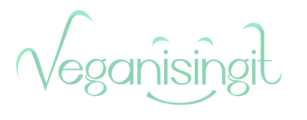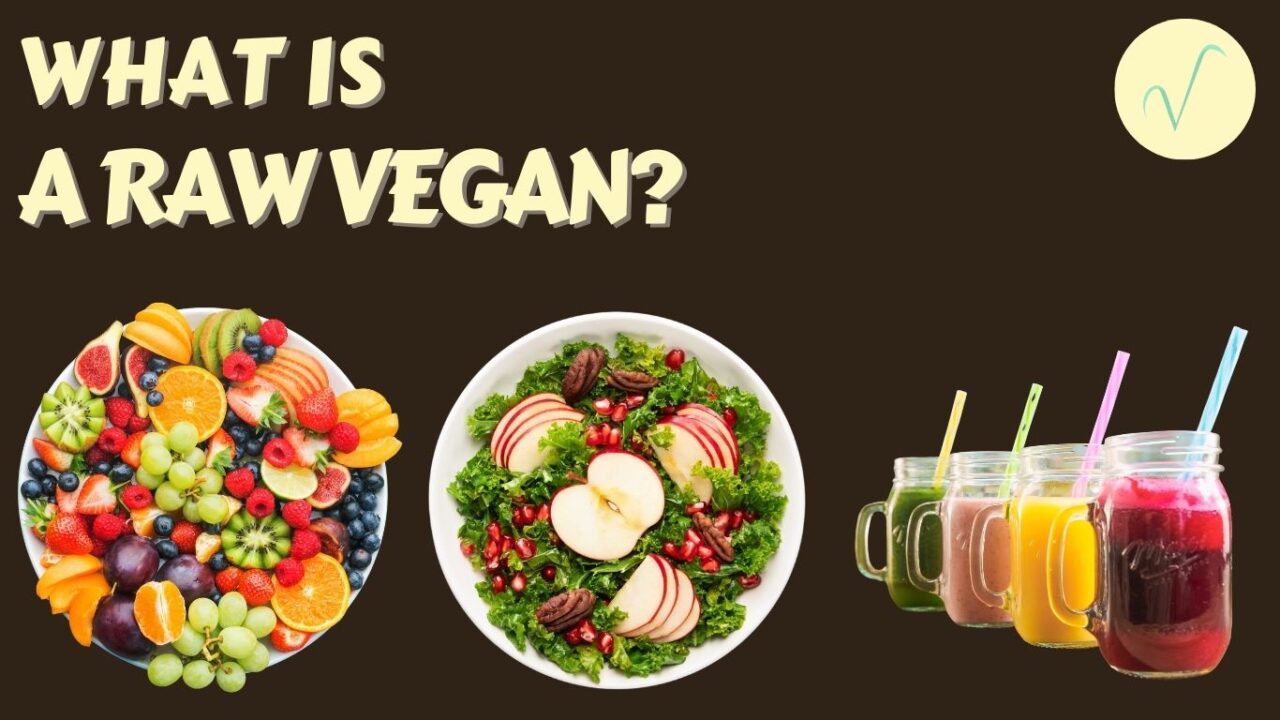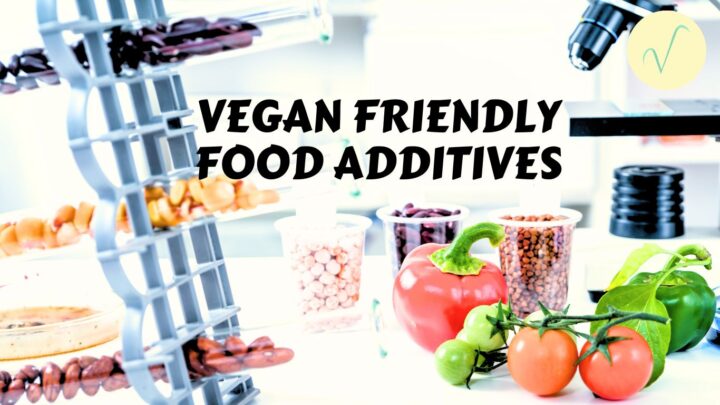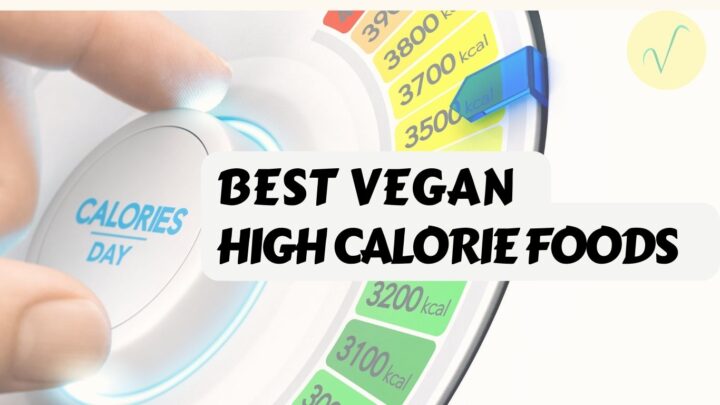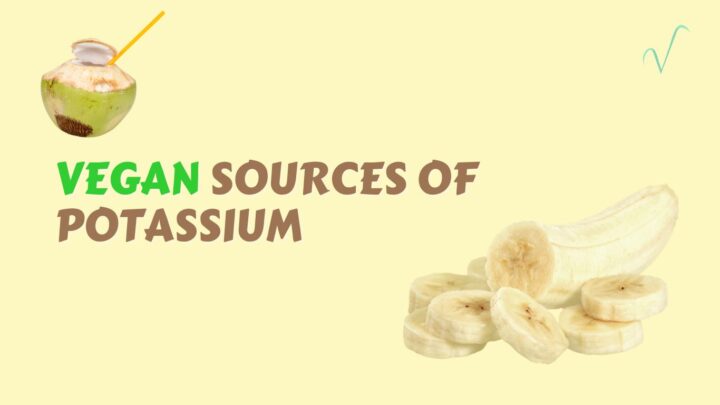The concept of a raw vegan diet may seem daunting at first; but as you become more of a veteran vegan, you’ll soon realise that raw vegan diet isn’t all too bad, and very possible.
This article is going to take you through the basic “rules” a raw vegan follows; what a raw vegan is; and a brief overview of the pros and cons of a raw vegan diet.
Let’s dive right in.
What can you eat in a raw food diet?
The raw diet, contrary to popular belief, is more than just mere raw veggies and fruits.
Recently, raw vegans have developed intelligent ways to make the most from uncooked foods to make culinary masterpieces.

Types of food in the raw vegan diet
In short, you’d find the following foods in a typical raw vegan diet:
- All fruits and veggies
- All leafy greens such as salad leaves and cabbage.
- Nuts and seeds
- Sprouted beans & legumes (i.e. Lentils, chickpeas, or black beans)
- Sprouted grains (i.e. Soaked rice)
- Root veggies & squashes (i.e. Sweet potato, butternut squash)
- Herbs and seasonings
- Various types of seaweed (uncooked)
The above ingredients are used in conjunction with each other to make a wide variety of meals; you’d be surprised could even be made from raw food.
Raw vegan meal types
As well as the typical juices, teas, smoothies and salads as you’d expect from a raw vegan diet, other foods can be created with the help of a dehydrator and intelligent food combinations.
Some of these meals include:
- Curried zoodles
- Cheesecake
- Quiches
- Crackers
- Crisps
- Nuggets
- Bread
Of course these meals can’t simply be made by combining the ingredients. For many of these you’d need a dehydrator to help with the binding.
Raw vegan-friendly processed foods
Other than raw ingredients & whole foods; which tend to make up the bulk of a raw vegan diet; the raw vegan diet also allows for a few processed foods to be consumed.
Those of which include:
- Raw nut milks
- Fermented foods (Sauerkraut, kimchi, natto, kombucha, vegan cheezes)
- Fresh olives
- Pure maple syrup (the expensive kind)
- Dehydrated fruits & veggies (oil free)
There is some heresay about whether the raw vegan diet should negate processed foods altogether, regardless of whether or not the food is raw in nature.
Would be good to bear this in mind if preparing a raw vegan meal for a friend, maybe ensure that you only include ingredients sourced as untouched whole foods.

How can you prepare food in a raw vegan diet?
Food prep in a raw vegan diet can be anything from tossing ingredients together, to juicing and blending foods to get your ideal textures.
For the purpose of keeping plant-based foods’ enzymes in tact, “cooking” temperatures cannot exceed 40-49 degrees celsius (or 104-120 degrees Fahrenheit).
It’s for this reason why we recommend purchasing a dehydrator if you plan to take a raw vegan diet on.
The methods you can use to prepare raw vegan meals include:
- Juicing (for juices)
- Blending (for sauces, dips, smoothies)
- Dehydrating (for crackers, quiches, etc)
- Fermentation (sauerkraut, natto, some vegan cheese recipes)
- Refrigeration (Vegan cheesecake, chilled soups, some vegan cheeses)
- Simple leafy greens, fruit combination (i.e. salad)
Find more information about the key tools needed for a raw vegan kitchen here.

Benefits of a raw vegan diet
Going without saying, eating more fruits and veggies, as is more prevalent in a raw vegan diet, comes with benefits in itself.
In terms of tangible benefits of a raw vegan diet, see below:
- Very nutritious, considering you must use more nuts, seeds, veggies and fruits to keep you full.
- Easy to maintain weight, as you typically eat fewer calories.
- Lower risk of diabetes.
- Lower blood pressure.
- Improved gut health, useful for management of inflammatory conditions.
- Consume food in its raw, most nutritious form, not compromising any nutrients by unnecessary cooking.
Although there are clear benefits to a raw vegan diet, it’s only right we also go through the cons.
Cons of a raw vegan diet
The cons of a raw vegan diet includes things such as:
- Longer time for food prep, should you want something more hearty.
- Lower fat consumed on average, meaning you’d have to eat more to stay satisfied.
- Potential nutrient deficiencies from a raw vegan diet, i.e. calcium, selenium & vitamin D if not carefully planned in the long-term.
Conclusion:
Based off this information, you may or may not want to give a raw vegan diet a go. Personally, I prefer to incorporate some raw vegan meals from time to time, to ensure I get a decent balance of raw and cooked foods.
Each to their own! I personally just like toast, pasta, rice and soups sometimes but eat salads and activated nuts and seeds on a daily basis.
Hopefully this helped give a decent overview of the raw vegan diet and how to approach it, should you choose to take it on.
If you like this article feel free to share it with friends and family to help educate them too, thanks for stopping by!
